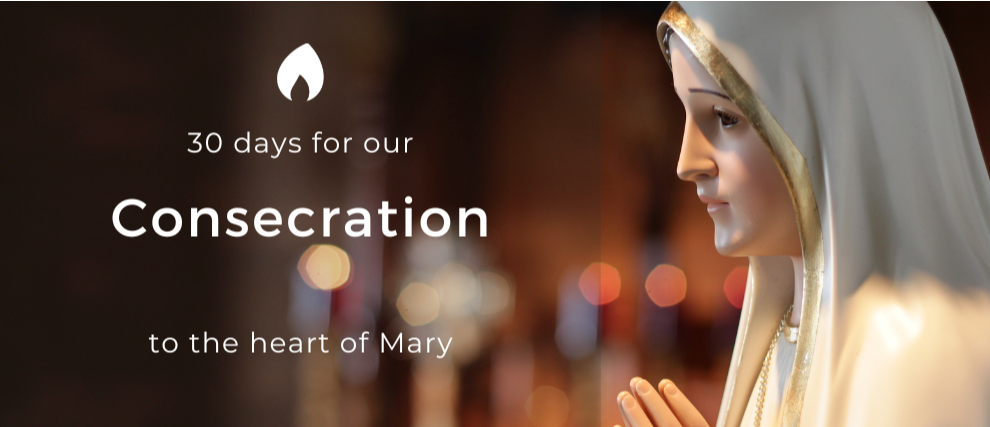Apparitions of the Virgin Mary in France
The Blessed Virgin Mary is undoubtedly the saint who has appeared most frequently among all the saints. These phenomena remain unexplained by the Church and are considered miracles, as during each apparition, the Virgin Mary announced future events through precise messages—all of which came to pass.
In France, the Blessed Virgin has appeared 10 times. Four of these apparitions are recognized by the Catholic Church, while the other six, though not officially approved, have been permitted for devotion and pilgrimage. All messages from these ten apparitions have been documented.
Recognized Marian Apparitions in France
Le Laus
In the Hautes-Alpes, the Virgin Mary appeared for 54 years, from 1664 to 1718, to Benoîte Rencurel, a 17-year-old shepherdess, during the Jansenist crisis. These are the longest-approved apparitions in Church history, meticulously documented by a lawyer, a hermit, and a theologian. Countless pilgrims have flocked to the site, and miraculous healings have occurred. Despite this, young Benoîte suffered persecution from Jansenist priests who disapproved of her messages.
La Salette
On September 19, 1846, in Isère, the Blessed Virgin appeared to two shepherd children, Maximin and Mélanie, delivering a message that shook the village:
"Come forward, my children, do not be afraid. I am here to tell you great news. If my people refuse to submit, I will no longer restrain my Son's arm. It is so strong and heavy that I can no longer hold it back. How long I have suffered for you! If I wish my Son not to abandon you, I must pray for you unceasingly..."
The apparition was approved five years later by the local bishop, who authorized the construction of a shrine. Today, it is France's second-most-visited Christian sanctuary after Lourdes.
Lourdes
In 1858, in the small village of Lourdes (Hautes-Pyrénées), the Virgin Mary appeared 18 times over six months to Bernadette Soubirous, a poor, illiterate 14-year-old. As the apparitions continued, crowds of believers grew. The grotto where Mary appeared quickly became France's most visited pilgrimage site. A chapel was built, later elevated to a basilica, and numerous healings have occurred at the spring discovered by Bernadette.
Pontmain
On January 17, 1871, in Mayenne, the Mother of God appeared to four children (two young brothers and their neighbors). For three hours, they beheld "a beautiful lady in the sky." Villagers joined the children in prayer, kneeling beside them. A miracle occurred that same day: France was at war with Prussia, and enemy troops were advancing toward Pontmain. Yet that evening, French sentinels reported the Germans had suddenly retreated, sparing the village. The apparition was officially recognized the following year, and a shrine was built, later elevated to a basilica by Pope Pius X.
Lesser-Known (Non-Recognized) Apparitions
Notre-Dame de l'Osier
On September 19, 1657, in Auvergne-Rhône-Alpes, the Mother of Jesus appeared to Pierre Port-Combet, a Protestant farmer. This followed the "miracle of the osier" on March 25, 1649. Mary, dressed in white and blue, warned Pierre to convert or face damnation. He converted on his deathbed seven days later. The hamlet was renamed "Notre-Dame-de-l'Osier" and remains a pilgrimage site.
Querrien
From August 15 to early September 1652, in Brittany, Jeanne Courtel, an 11-year-old deaf-mute girl, saw the Virgin Mary 15 times. At the first apparition, Jeanne was miraculously healed, astounding the village. A chapel was built, and though the Church has not formally recognized the apparitions, 70,000 pilgrims visit annually.
Rue du Bac, Paris
In April 1830, at a convent in Paris, St. Catherine Labouré, then a novice, saw the Virgin Mary three times. Mary instructed her to create the Miraculous Medal, which has since been associated with many miracles. Though unapproved, the apparitions gained implicit recognition through Catherine's canonization.
Pellevoisin
In 1876, in Centre-Val de Loire, Mary appeared 15 times to Estelle Faguette, a 33-year-old maid suffering from tuberculous peritonitis. During the fifth apparition, Mary promised healing and later tasked Estelle with spreading devotion to the Scapular of the Sacred Heart. In 1877, the Bishop of Bourges authorized the cult, and Estelle's room became a chapel.
Kerizinen
From September 15, 1938, to October 1, 1965, in Finistère, Mary appeared 71 times (sometimes with Jesus) to Jeanne-Louise Ramonet, 28. Jeanne once saw the Holy Family and recorded 65 messages, later published. Despite the lack of formal recognition, miracles occurred at a spring that appeared miraculously. A small oratory was built in 1956, followed by a larger one in 1976 to accommodate pilgrims.
Île Bouchard
On December 8, 1947, in Indre-et-Loire, Mary appeared for a week to four girls (ages 7–12). She asked them to "tell children to pray for France, which is in great need." Though unapproved, the messages were disseminated, and pilgrimages were authorized in 2001.
Notre-Dame du Rosaire (Unrecognized)
In 1208, in Languedoc, Mary appeared to St. Dominic, presenting the Rosary as a weapon against heresy. Though unapproved, Pope Pius V instituted the feast of "Our Lady of Victory" (October 7) in 1571 after the Battle of Lepanto. In 1969, Pope Paul VI renamed it "Our Lady of the Rosary."
Continue Your Prayer to the Virgin Mary with Hozana!
Discover wonderful prayer communities dedicated to the Blessed Virgin on Hozana:
Pray this to learn of her miracles and seek her intercession.
Pray to for healing and peace for families.
Join this to grow in holiness!

